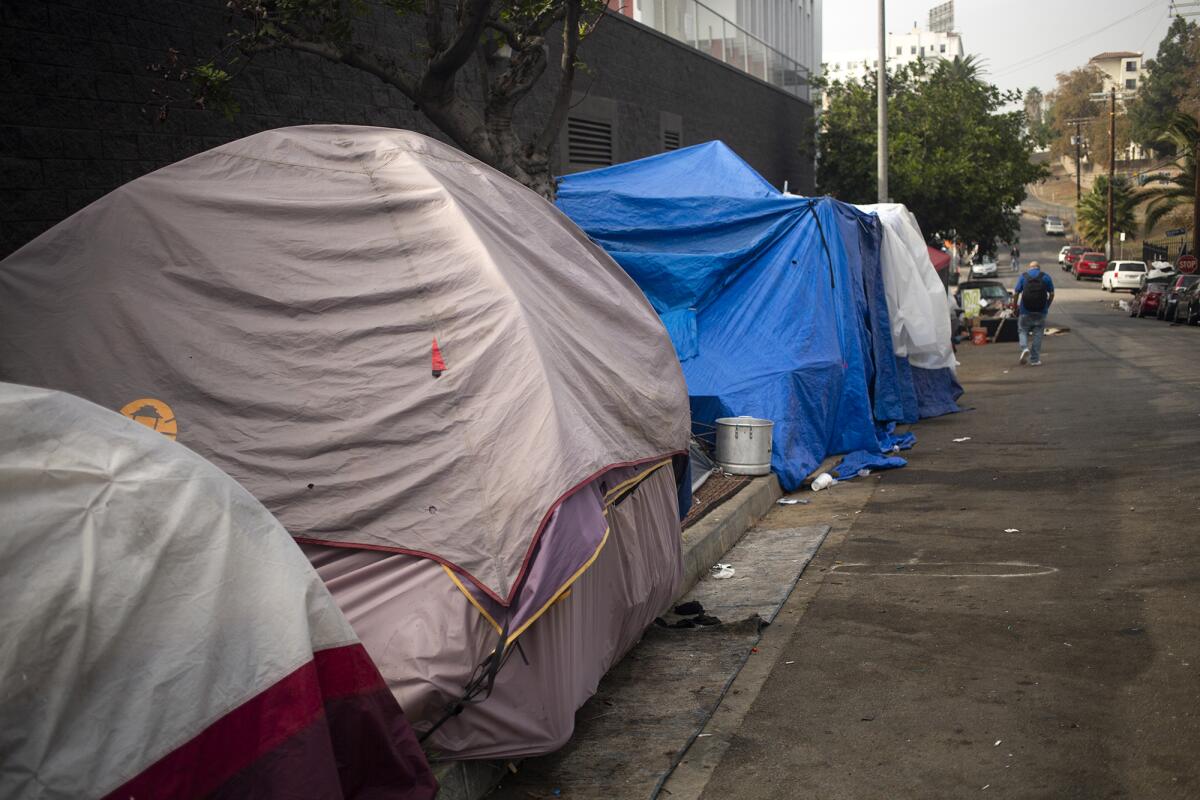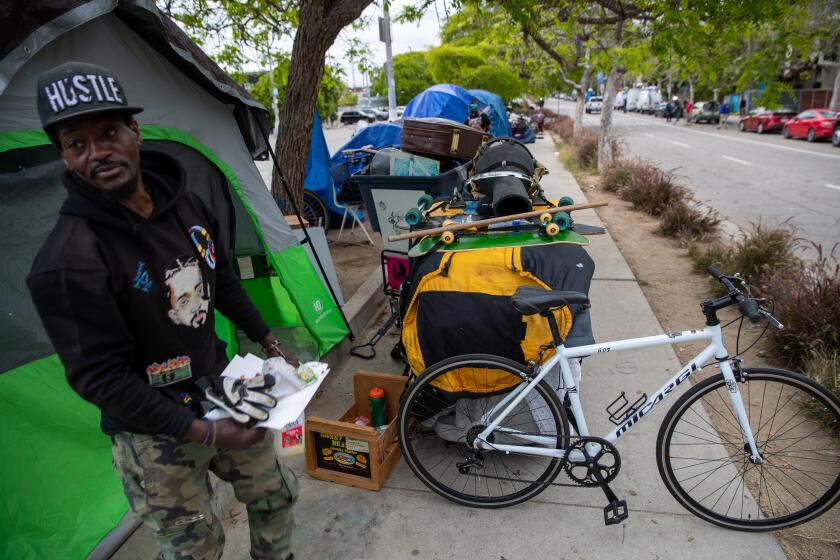Many homeless in L.A. died from drugs in 2023, preliminary data show

- Share via
Data released Thursday by City Controller Kenneth Mejia show at least 898 homeless people died last year on streets, in shelters, on freeways and elsewhere.
Mejia’s report, which analyzed Los Angeles County Department of Medical Examiner preliminary data, did not break down the number of deaths linked to drugs because toxicology reports may be pending in some cases.
A Times analysis of the data found that about 65%, or 545, of last year’s deaths reported so far were linked to drugs, including fentanyl and methamphetamine — an indication of the deadly toll of the drug crisis on the streets of L.A. The number could increase as more toxicology reports come in.
Continuing a persistent rise over the last several years, homelessness was estimated to have increased 10% in the city of Los Angeles in 2022 and 9% across the county.
Los Angeles is home to about 46,260 unhoused people — an 80% increase since 2015, according to figures released last year by the Los Angeles Homeless Services Authority.
In recent years, the city has spent billions of dollars to address homelessness and build more housing. The fentanyl and meth crisis has prompted city officials to fund treatment beds for homeless people suffering from addiction — a service that has typically been paid for by county government, not City Hall.
According to Mejia’s report, 75% of the 2023 homeless deaths reported so far were accidental — a category that includes drug-related deaths.
About 18% were due to natural causes, 4% were homicides and 2% suicides, the report said. In 1% of the deaths, the cause was undetermined.
At least 73% of the deaths occurred in streets or places such as tents, RVs and parking lots.
According to the report, 31% of the homeless people who died in 2023 were Black. Black people are 8% of the city’s population but 33% of the unhoused population.
The report found that the parts of the city with the highest numbers of homeless deaths were Council District 14, which includes Skid Row and Council District 1, which includes MacArthur Park near downtown.
Councilmember Eunisses Hernandez, who represents District 1, said the majority of homeless deaths in her district last year were due to opioids. She said she wants to bring more services to MacArthur Park, where many of those deaths occurred.
“We cannot look away from this crisis — the consequences of simply shuffling people from one neighborhood to the next and prioritizing criminalization over the delivery of services are at best ineffective, and at worst, deadly,” said Hernandez.
A report last year by the L.A. County Department of Public Health said that in 2022, fentanyl was the cause of almost 60% of accidental drug or alcohol overdoses in the overall county population. Fentanyl has surpassed meth as the most common drug contributing to overdose deaths.
A new report blames fentanyl for more fatal overdoses in L.A. County than methamphetamine for the first time in recent years. The opioid’s victims are disproportionately Black.
Jason Ward, an economist at the Santa Monica-based Rand Corp., a nonprofit research institute, said in an interview in February that he continues to see a “very high rate” of mortality among unhoused people in Los Angeles because of fentanyl.
The fentanyl-related deaths are cutting so deep that the overall homeless population in the city is likely decreasing, Ward said.
More to Read
Sign up for Essential California
The most important California stories and recommendations in your inbox every morning.
You may occasionally receive promotional content from the Los Angeles Times.














